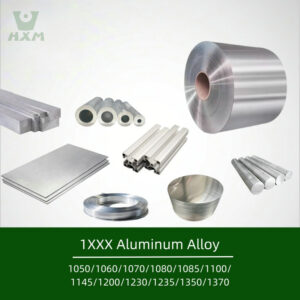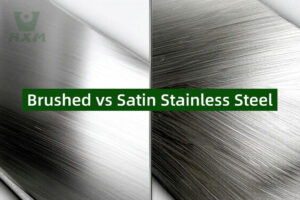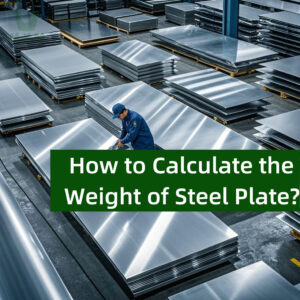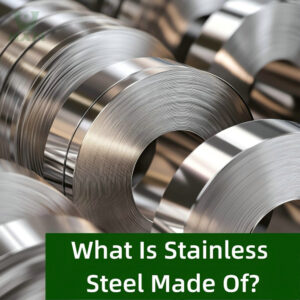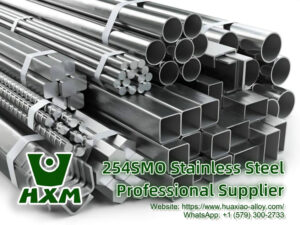What Is HSLA Steel?
- July 17, 2024
- 6:44 pm
- 1777
High Strength Low Alloy steel, also called HSLA steel, is a specific category of steel that provides higher mechanical properties and greater resistance to corrosion than conventional carbon steels. It is not defined by its composition but rather by its properties. HSLA steels are designed to provide better mechanical properties or greater resistance to atmospheric corrosion than traditional carbon steels.
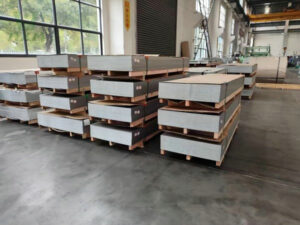
compositions of some common HSLA steel grades
| Element | HSLA Grade 50 | HSLA Grade 60 | HSLA Grade 70 | HSLA Grade 80 | HSLA Grade 100 |
|---|---|---|---|---|---|
| Carbon (C) | 0.20% | 0.26% | 0.28% | 0.18% | 0.15% |
| Manganese (Mn) | 1.35% | 1.40% | 1.50% | 1.65% | 1.60% |
| Phosphorus (P) | 0.03% | 0.03% | 0.03% | 0.025% | 0.025% |
| Sulfur (S) | 0.03% | 0.03% | 0.03% | 0.025% | 0.025% |
| Silicon (Si) | 0.40% | 0.40% | 0.40% | 0.40% | 0.50% |
| Nickel (Ni) | 0.25% | 0.25% | 0.30% | 0.30% | 0.30% |
| Copper (Cu) | 0.20% | 0.20% | 0.25% | 0.25% | 0.25% |
| Chromium (Cr) | 0.15% | 0.15% | 0.20% | 0.20% | 0.20% |
| Molybdenum (Mo) | 0.05% | 0.05% | 0.10% | 0.10% | 0.10% |
| Vanadium (V) | 0.05% | 0.10% | 0.10% | 0.15% | 0.15% |
| Niobium (Nb) | 0.005% | 0.005% | 0.005% | 0.010% | 0.010% |
| Nitrogen (N) | 0.008% | 0.009% | 0.010% | 0.010% | 0.010% |
| Aluminum (Al) | 0.05% | 0.05% | 0.06% | 0.06% | 0.07% |
| Titanium (Ti) | 0.02% | 0.02% | 0.03% | 0.03% | 0.03% |
| Boron (B) | 0.0005% | 0.0005% | 0.0005% | 0.001% | 0.001% |
| Zirconium (Zr) | 0.005% | 0.005% | 0.005% | 0.005% | 0.005% |
| Calcium (Ca) | 0.01% | 0.01% | 0.01% | 0.01% | 0.01% |
| Cobalt (Co) | 0.05% | 0.05% | 0.05% | 0.05% | 0.05% |
| Iron (Fe) and others | ~96.11% | ~95.43% | ~94.69% | ~95.31% | ~95.36% |
Properties of HSLA Steel
Increased Strength: HSLA steels are stronger than standard carbon steel due to their specific chemical compositions that include small amounts of alloying elements such as chromium, copper, niobium, nickel, and molybdenum. These elements significantly enhance the strength of the steel.
Improved Toughness and Ductility: Despite their strength, HSLA steels maintain good ductility and toughness, making them more resistant to brittle fractures.
Enhanced Corrosion Resistance: Some grades of HSLA steel are designed to resist corrosion and extend the life of the material in corrosive environments. This is achieved through the addition of elements like copper, which promotes the formation of a protective oxide layer.
Weldability and Formability: HSLA steels are known for their excellent weldability and formability, making them ideal for various manufacturing processes without compromising their structural integrity.
Applications of HSLA Steel
- Automotive Industry: Used in the manufacture of vehicle frames, wheels, and other structural components due to its high strength-to-weight ratio.
- Construction: Employed in buildings and bridges where strength, durability, and resistance to atmospheric corrosion are critical.
- Pressure Vessels and Pipelines: Suitable for applications under high pressure due to its strength and toughness.
- Heavy Machinery: Used in cranes, trucks, and mining equipment that require strong and durable materials capable of withstanding heavy loads and harsh conditions.
Common Grades of HSLA Steel
ASTM A572
- Grades: A572 Grade 50, Grade 60, Grade 65
- Features: Offers good strength, weldability, and formability.
- Applications: Widely used in structural applications including bridges, buildings, and construction equipment.
ASTM A588
- Grades: A588 Grade A, Grade B, Grade C, Grade K
- Features: Known for its atmospheric corrosion resistance, which is higher than that of plain carbon steel.
- Applications: Ideal for structural frames in areas exposed to high levels of humidity or atmospheric conditions.
ASTM A656
- Grades: Grade 50, Grade 60, Grade 70, Grade 80
- Features: High strength, improved formability, and excellent weldability.
- Applications: Mainly used in construction equipment, trucks, cranes, and rail cars.
ASTM A709
- Grades: Grade 36, Grade 50, Grade 50S, Grade 50W, Grade HPS50W, Grade HPS70W
- Features: Contains weathering steel grades and HSLA steel grades. It is designed for manufacturing structural parts like bridges.
- Applications: Predominantly used in bridge construction and structural applications requiring weathering characteristics for enhanced durability.
SAE J1392
- Grades: 045XLK, 050XLK, 060XLK, 070XLK, 080XLK, 090XLK, 100XLK
- Features: These are high-strength, low-alloy steels designed for high yield strength.
- Applications: Used in automotive parts such as wheels, chassis components, and other critical strength applications.
API 5L
- Grades: Grade X42, X46, X52, X56, X60, X65, X70, X80
- Features: Not only categorized as HSLA steels but also known for their excellent weldability and toughness at low temperatures.
- Applications: Specifically formulated for pipeline applications where liquid, gas, or oil needs to be transported over long distances.
Manufacturing Process
HSLA steel is typically made through a process that includes controlled rolling and/or controlled cooling to refine the grain size, enhancing the toughness and strength of the steel. The precise amounts of alloying elements and the specific thermal treatment vary depending on the desired properties of the final product.
Advantages of HSLA Steel
- Economic Viability: Because HSLA steels are stronger, less material is required to achieve certain strength objectives, which reduces the material costs.
- Reduced Weight: Vehicles and structures made from HSLA steel are lighter, which can lead to savings in fuel and increased load-carrying capacity.
- Environmentally Friendly: Lower weight means reduced energy use and emissions in vehicles and structures.
Development trend
Based on controlled rolling technology and microalloying metallurgy, many low alloy high strength steels have been developed. The main development direction of low alloy high strength steel has the following aspects.
(1) Low carbon, ultra-low carbon and high purification.
(2) Micro-alloyed steel technology.
(3) The use of controlled rolling and controlled cooling process.
(4) Ultra-fine graining and computer control and performance prediction.
conclusion
In summary, HSLA steels offer a superb balance of strength, ductility, and resistance to wear and corrosion. These properties make them ideal for a wide range of applications in industries demanding higher performance than standard carbon steel can provide.
If you found this article good, feel free to share it on your other social media platforms.

